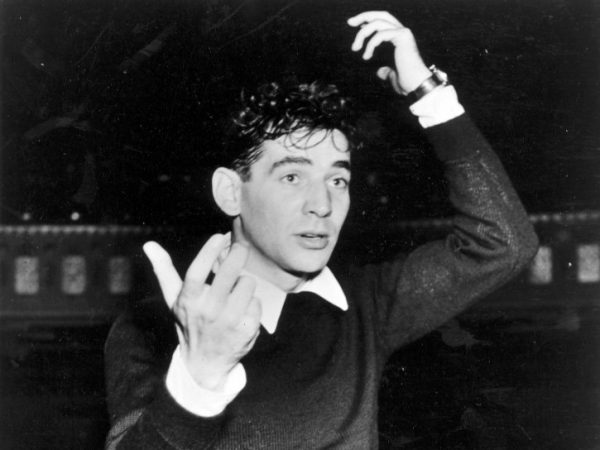
Leonard Bernstein: Symphony No. 2, The Age of Anxiety. Yannick Nézet-Séguin conducting the Philadelphia Orchestra, Jean-Yves Thibaudet pianist. April 2018.
The Age of Anxiety is the most interesting example of Leonard Bernstein’s composing talent.
It’s piano-centered and Bernstein, of course, was a pianist. In addition, it has a unique tone. Bernstein is usually remembered for his romantic compositions and his pleas for understanding, like West SideStory, On the Waterfront, Chichester Psalms. The subject here is more cerebral.
Instead of reliance on hope and love, he presents a complex examination of anxious states of mind. The 30-year-old Bernstein expressed the myriad of emotions that filled his life at that time — including melancholy, and a search for the meaning of life. Also, quirky humor that’s not present in his more famous works. And, yes, anxiety. No other composition shows as many facets of Bernstein’s personality.
In The Age of Anxiety he’s telling the stories of three guys and a girl having drinks in a bar, becoming increasingly candid as they imbibe. He’s also telling his own story — the ruminations of a bright and curious man.
There’s more technical variety, too, including a twelve-tone row juxtaposed with a jazz riff. Bernstein wrote variations on the seven stages of life from infancy to death, and seven more variations reflecting the characters’ inebriated search for meaning. Towards the end, the orchestra stops playing and we hear a jazz piano, double bass and percussionists having a jam session. As pianist Jean-Yves Thibaudet says, “It’s written; it’s not improvised, but it sounds like we’re improvising or jamming.”
The composition is based on the poem of the same name by W.H. Auden, which won a Pulitzer prize for literature. That 1947 book-length poem was criticized in The Times of London as Auden’s “one dull book, a failure” but its themes intrigued Bernstein. Auden, who left his native England at the start of World War II to live in New York (and possibly felt guilty for doing so), wrote about solitary drinkers in a wartime Manhattan bar, meditating. This is the flip side of the romantic wartime New York which Lenny wrote about in On the Town.
Bernstein was 27 years old and living on 52d Street just off Fifth Avenue at the end of the war. He avoided armed service because of asthma and must have identified with the feelings of Auden’s characters. He wrote that he found the poem “fascinating and hair-raising.” Bernstein’s symphony, mind you, has no words. Everything is communicated through his writing for the piano and orchestra. The instruments share their separate loneliness and their search for meaning in life. Bernstein makes a personal statement of his distaste for atonal music by writing a 12-tone row and then answering it by transforming its pitches into that bebop jazz riff.
The performance by the Philadelphia Orchestra spotlights superb work by the first-desk players, who interact among themselves, and with Thibaudet, almost as if they are members of a jazz ensemble. It’s obvious that the musicians are listening to each other. The piano represents the composer in quest of meaning, struggling to be understood in a detached world of winds, horns and percussion.
Yannick Nézet-Séguin grew up in Montreal and was a teenager when Bernstein died, which makes his mastery of this piece especially remarkable. Once again he is demonstrating a breadth of identification with eclectic types of music.
For earlier reports on the Bernstein centennial, click here — and also here.